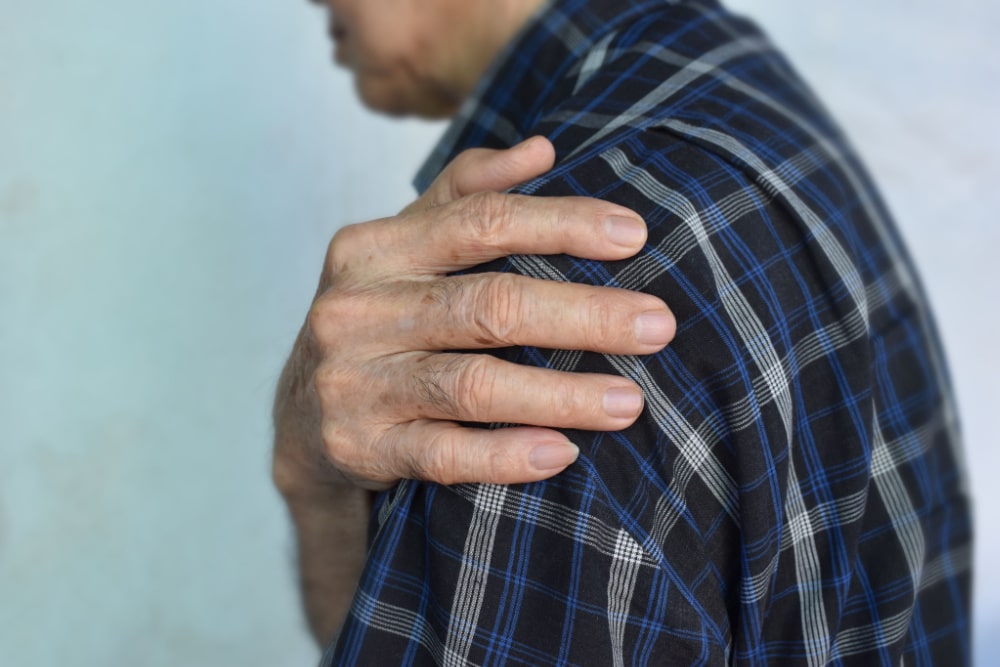As a ball and socket joint, the shoulder joint allows for more range of motion than other joints in the body. The shoulder socket, or glenoid, might be compared to a cup. The upper arm bone fits into “the cup” attached with ligaments, tendons, and cartilage tissue.
What is Reverse Shoulder Replacement?
Whether due to injury, arthritis, or other shoulder conditions, the shoulder cartilage, surface of the bone, shoulder joint, or ligaments can become damaged.
In a typical shoulder replacement, a plastic lining is attached to the socket to allow smooth movement of the shoulder joint. The surgeon removes the top of the arm bone and inserts a metal stem with a ball on the end. However, if the rotator cuff is severely damaged, the joint may not be stable enough or work properly.
However, reverse shoulder surgery is a minimally invasive surgical procedure used to recreate the ball and joint socket. Unlike a traditional shoulder replacement, the position of the “cup” and “ball” is switched. A metal or plastic “ball” is attached to the original shoulder socket, and a “cup” like insert is placed over the arm bone.
Anesthesia is used during the procedure so you won’t feel any pain or discomfort. Beyond that, a nerve block may be used to help control the pain in the shoulder for a few hours after the surgery is done.
Treatable Injuries
Patients suffering from the following shoulder conditions may require reverse shoulder replacement surgery:
- Osteoarthritis and Rheumatoid shoulder arthritis
- Labrum or rotator cuff tears
- Rotator cuff tear arthropathy
- Decay of shoulder blade or clavicle bone tissue
- Inflamed tissue
- Pain in the shoulder
- Frozen shoulder
- Limited movement of the shoulder joint due to failed shoulder replacement or failed shoulder surgery
Treatment
As a minimally invasive surgery, reverse total shoulder replacement is typically an outpatient procedure, meaning patients can go home the same day.
Candidates for the procedure are often looking to experience less pain, stiffness, and swelling in the shoulder area. Usually reserved for older patients, reverse shoulder surgery is considered a last-effort procedure.
Similar to a conventional shoulder replacement, a reverse shoulder replacement uses a prosthetic implant to improve the function of your shoulder joint and help with pain control.
At Steven S. Goldberg, MD Orthopedic Surgery and Sports Medicine, the outpatient shoulder procedure is an alternative method for patients suffering from arthritis, extensive shoulder problems, and irreparable rotator cuff tears.

Related Blog
What is a Subscapularis-Sparing Shoulder Replacement?
Subscapularis-sparing shoulder replacement is a new technique in shoulder surgery – one that very few surgeons, such as Dr. Goldberg, are currently performing in the United States. The subscapularis-sparing technique is an innovative approach to shoulder replacement that has the potential for improving surgical outcomes with less recovery time and quicker return to full activity. Dr. Goldberg also teaches Subscapularis…
Recovery
After reverse shoulder surgery, you will need to go through physical therapy as your shoulder heals. Your physical therapy sessions will help strengthen your shoulder and improve your range of motion. How complex the surgical procedure influences what your recovery timeline looks like. It also determines how many therapy sessions you’ll need. Full recovery typically takes 4-8 months.
You may feel some discomfort in the shoulder and rotator cuff area during recovery but you will likely be prescribed pain medication.
Once you’re fully recovered, you’ll experience much less pain and discomfort, and much more range of motion in your shoulder than you did before the shoulder surgery.
Shoulder Surgery in Naples, FL
Dr. Steven Goldberg is a leading orthopedic surgeon and sports medicine specialist in Southwest Florida. If you are seeking pain relief from a shoulder injury or chronic pain, please call our office or fill out an online contact form to schedule an appointment and learn more about your options for shoulder surgery.


